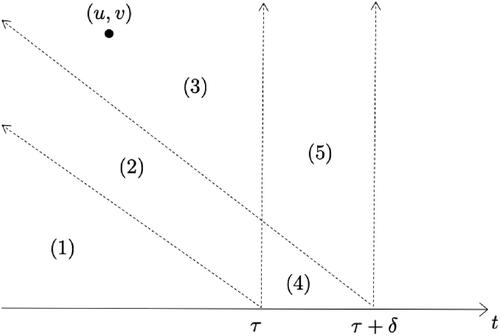Figures & data
Figure 3. Left to right: density plots of marginal posterior distributions for parameters β0, β1, α and θ.
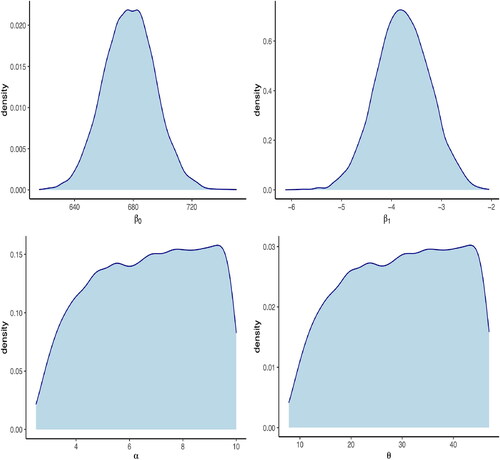
Figure 4. Prediction of the number of prisoners in the Theft offences group from August 2019 to March 2020. Left panel: long-term projections (red line) together with two standard deviation prediction interval (grey shaded region). Right panel: short-term projections (red line) together with two standard deviation prediction interval (grey shaded region). The observed values are in black.
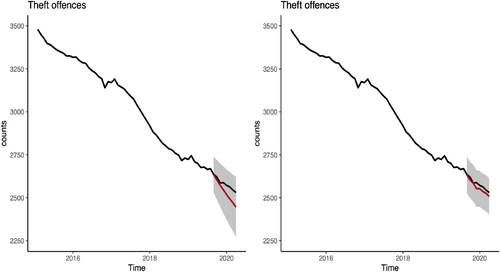
Figure 5. Prediction of the number of prisoners in the Sexual offences (top row) and Public order offences (bottom row) groups from August 2019 to March 2020. Left panel: long-term projections (red line) together with two standard deviation prediction interval (grey shaded region). Right panel: short-term projections (red line) together with two standard deviation prediction interval (grey shaded region). The observed values are in black.
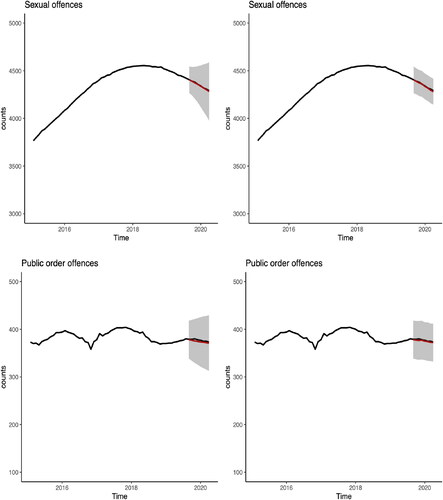
Figure 6. Example 4.3. Sentencing policy modification for Theft offences group where The red line is associated with unchanged parameters, the blue line is associated with
and the green line with
Solid line is the predictor. Dashed lines represent two standard deviation prediction intervals.
![Figure 6. Example 4.3. Sentencing policy modification for Theft offences group where E[So]=5.22. The red line is associated with unchanged parameters, the blue line is associated with E[Sν]=8 and the green line with E[Sν]=3. Solid line is the predictor. Dashed lines represent two standard deviation prediction intervals.](/cms/asset/4a6b6faa-0946-43fc-ac64-4c9eb8551bc5/tjor_a_2189002_f0006_c.jpg)
Figure 7. Example 4.3. Sentencing policy modification for Sexual offences group where The red line is associated with unchanged parameters, the blue line is associated with
and the green line with
Solid line is the predictor. Dashed lines represent two standard deviation prediction intervals.
![Figure 7. Example 4.3. Sentencing policy modification for Sexual offences group where E[So]=29.71. The red line is associated with unchanged parameters, the blue line is associated with E[Sν]=48 and the green line with E[Sν]=24. Solid line is the predictor. Dashed lines represent two standard deviation prediction intervals.](/cms/asset/863a7c50-fbe3-40ba-a007-fa7cc58ecbb7/tjor_a_2189002_f0007_c.jpg)
Figure 8. Example 4.3. Sentencing policy modification for Public order offences group where The red line is associated with unchanged parameters, the blue line is associated with
and the green line with
Solid line is the predictor. Dashed lines represent two standard deviation prediction intervals.
![Figure 8. Example 4.3. Sentencing policy modification for Public order offences group where E[So]=3.79. The red line is associated with unchanged parameters, the blue line is associated with E[Sν]=12 and the green line with E[Sν]=1. Solid line is the predictor. Dashed lines represent two standard deviation prediction intervals.](/cms/asset/93b2d3ef-894f-4273-8480-418030db3a96/tjor_a_2189002_f0008_c.jpg)
Figure 9. Example 3.7. For fixed varying
![Figure 9. Example 3.7. For fixed E[S]=3, varying (λ,cs2).](/cms/asset/625367b3-295e-4630-9149-ccb5a5d95678/tjor_a_2189002_f0009_c.jpg)
Figure C11. ARIMA model prediction of the number of prisoners in the Theft offences group from August 2019 to March 2020. Left panel: long-term projections (red line) together with two standard deviation prediction interval (grey shaded region). Right panel: short-term projections (red line) together with two standard deviation prediction interval (grey shaded region). The observed values are in black.

Figure C10. Example B.2. Congestion level relative to the mean vs. recovery time
For fixed
and varying
(black lines). An intervention of
is illustrated by the corresponding blue lines.
![Figure C10. Example B.2. Congestion level relative to the mean nν vs. recovery time t. For fixed E[S]=3, ν=30 and varying (θ,α,cs2) (black lines). An intervention of λ2=0.8λ1 is illustrated by the corresponding blue lines.](/cms/asset/f40d024f-739c-4e69-9757-d94ae6761548/tjor_a_2189002_f0011_c.jpg)
Figure C12. ARIMA model prediction of the number of prisoners in the Sexual offences (top row) and Public order offences (bottom row) groups from August 2019 to March 2020. Left panel: long-term projections (red line) together with two standard deviation prediction interval (grey shaded region). Right panel: short-term projections (red line) together with two standard deviation prediction interval (grey shaded region). The observed values are in black.
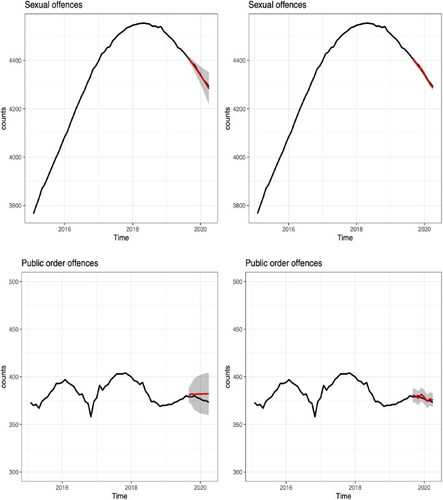
Table 1. Offence groups.


